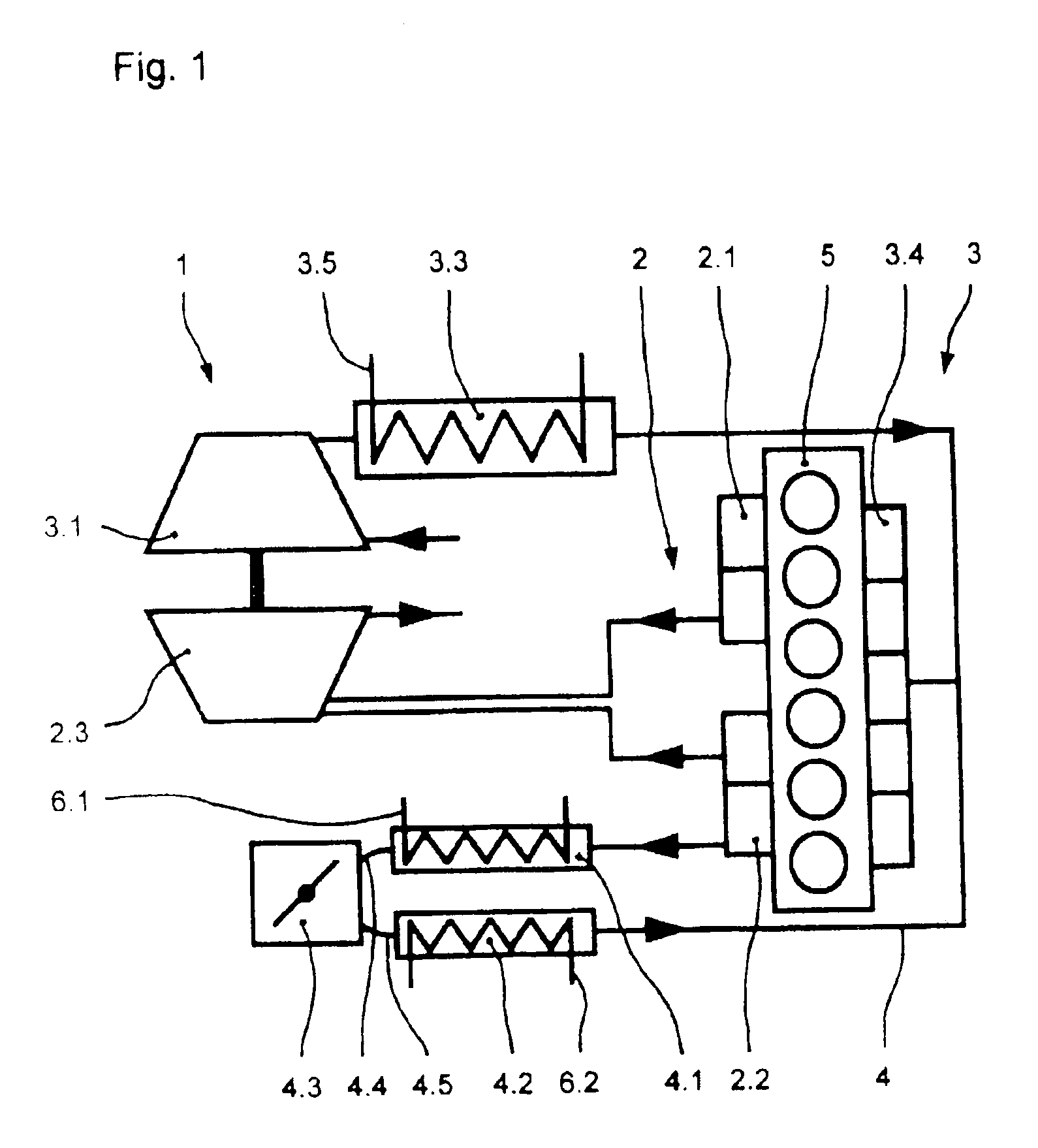Exhaust-gas recirculation system of an internal combustion engine
a technology of exhaust gas and internal combustion engine, which is applied in the direction of machines/engines, mechanical equipment, and non-fuel substance addition to fuel, can solve the problems of low cooling capacity of the first exhaust-gas cooler, and achieve the effects of preventing overheating and excessive corrosion, reducing cooling capacity, and improving the cooling capacity of the second exhaust-gas cooler
- Summary
- Abstract
- Description
- Claims
- Application Information
AI Technical Summary
Benefits of technology
Problems solved by technology
Method used
Image
Examples
Embodiment Construction
[0013]FIG. 1 illustrates an internal combustion engine, an air inlet system 3 and an exhaust-gas discharge system 2, of the internal combustion engine, which includes a cylinder block 5. The exhaust-gas discharge system 2 is connected to the cylinder block 5 via a first exhaust-gas manifold 2.1 and a second exhaust-gas manifold 2.2. The exhaust-gas discharge system 2 extends from the first exhaust-gas manifold 2.1 or from the second exhaust-gas manifold 2.2 to an exhaust-gas turbine 2.3.
[0014]The exhaust-gas turbine 2.3 serves as a motor for a charge-air compressor 3.1, via which charge air is supplied to the air inlet system 3. The air inlet system 3 includes a charge-air cooler 3.3 which, in turn, is connected to a charge-air manifold 3.4 on the cylinder block 5.
[0015]Connected to the second exhaust-gas manifold 2.2, is an exhaust-gas recirculation line 4, which is connected at its other end, together with the air inlet system 3, to the charge-air manifold 3.4. The exhaust-gas rec...
PUM
 Login to View More
Login to View More Abstract
Description
Claims
Application Information
 Login to View More
Login to View More - R&D
- Intellectual Property
- Life Sciences
- Materials
- Tech Scout
- Unparalleled Data Quality
- Higher Quality Content
- 60% Fewer Hallucinations
Browse by: Latest US Patents, China's latest patents, Technical Efficacy Thesaurus, Application Domain, Technology Topic, Popular Technical Reports.
© 2025 PatSnap. All rights reserved.Legal|Privacy policy|Modern Slavery Act Transparency Statement|Sitemap|About US| Contact US: help@patsnap.com


